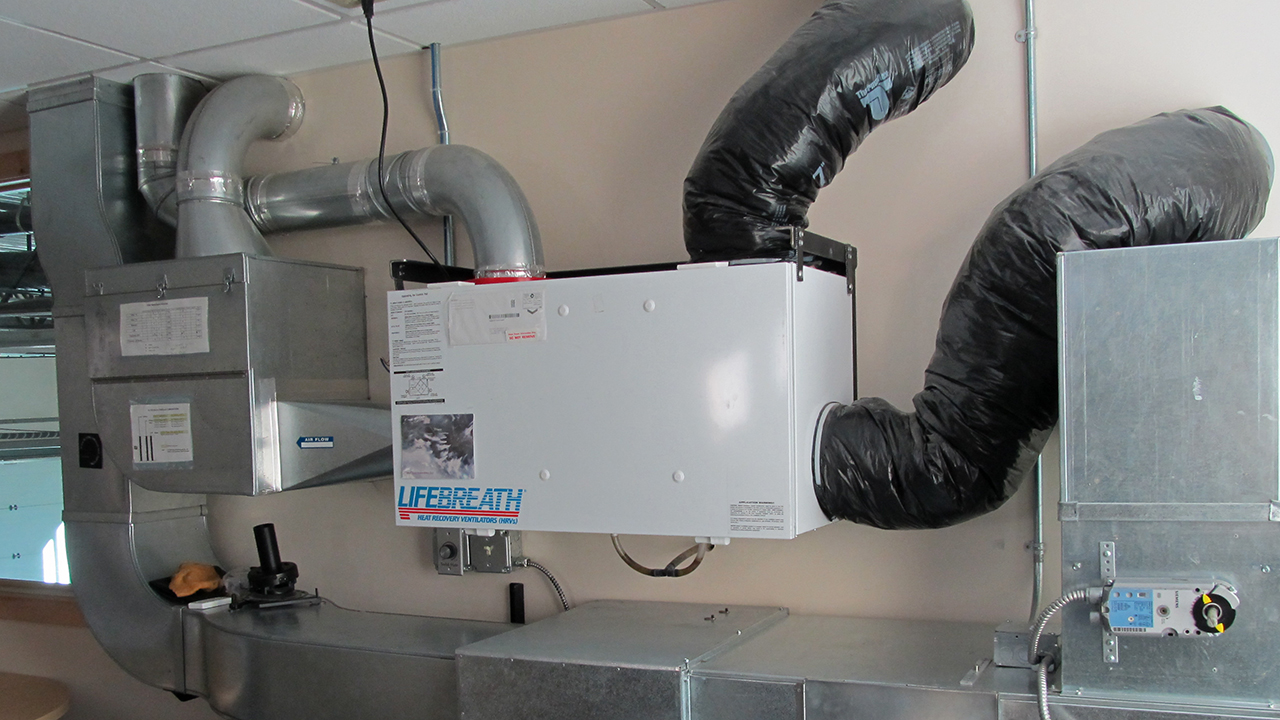Should You Buy HRV? Benefits and Drawbacks
Wiki Article
The All-Inclusive Guide to the Uses of Heat Recovery Ventilation in Modern Structures
Heat Recovery Ventilation (HRV) systems represent a significant innovation in building innovation (HRV Heat Recovery Ventilation). They provide a technique for trading stale indoor air with fresh exterior air while minimizing power loss. This approach not only boosts indoor air high quality yet also adds to energy performance in both household and commercial structures. Comprehending the various applications and advantages of HRV can reveal its critical duty in modern design and sustainability efforts. The effects of this technology deserve exploring even moreComprehending Heat Recovery Ventilation Equipments

Although numerous modern-day buildings prioritize energy effectiveness, comprehending warmth recuperation ventilation (HRV) systems is crucial for maximizing indoor air high quality and lowering energy consumption. HRV systems work by transferring heat from stagnant interior air to inbound fresh air, successfully preserving comfy indoor temperatures while minimizing energy loss. These systems contain a warm exchanger, fans, and ductwork that facilitate the blood circulation of air. Throughout winter, HRV systems record and reuse warm from the outgoing air, while in summertime, they can aid cool down incoming air. By continually trading air, HRV systems also minimize moisture and the focus of indoor pollutants. Proper installation and maintenance of HRV systems are vital for their effectiveness and performance in improving total structure efficiency and comfort.
Advantages of Heat Recovery Ventilation
Heat recovery ventilation systems provide many advantages that boost both power performance and interior air quality in modern buildings. By recording and recycling power from exhaust air, these systems significantly decrease cooling and heating prices, bring about reduced power intake. In addition, they preserve a steady circulation of fresh exterior air, lessening the danger of indoor air toxins and allergens. This continual exchange aids manage humidity levels, avoiding mold growth and making certain a much healthier living atmosphere. Additionally, HRV systems contribute to sustainability objectives by lowering total carbon impacts. Their ability to optimize air flow without compromising thermal comfort makes them a valuable enhancement to contemporary structure design, promoting both financial and environmental benefits.Applications of HRV in Residential Structures
As property owners increasingly focus on energy efficiency and interior air high quality, the applications of heat recuperation ventilation (HRV) systems in property buildings have actually ended up being much more widespread. HRV systems are especially useful in firmly secured homes, where preserving fresh air circulation is vital for protecting against moisture accumulation and interior toxins. They properly transfer heat from outbound stale air to incoming fresh air, minimizing power costs related to cooling and heating. In addition, HRVs can improve convenience levels by managing humidity and temperature. They are likewise versatile for various property layouts, including single-family homes and multi-unit buildings. In general, integrating HRV systems supports lasting living practices while ensuring a healthier interior environment for occupants.HRV in Industrial and Industrial Setups
In business and industrial settings, the implementation of warm healing air flow (HRV) systems has ended up being increasingly critical for optimizing power performance and preserving air quality. These systems properly transfer heat from exhaust air to inbound fresh air, decreasing the requirement for additional heating or cooling. This not only decreases power expenses yet additionally adds to sustainability efforts. Industries such as manufacturing, warehousing, and office complex profit substantially from HRV systems, as they assist regulate temperature and moisture levels, making certain a comfortable and effective atmosphere. HRV systems help in getting rid of pollutants and excess moisture, boosting indoor air quality. As laws around air high quality become more stringent, the adoption of HRV technology is most likely to grow, making it a HRV Heat Recovery Ventilation crucial part of contemporary commercial and commercial infrastructure.Future Fads in Heat Recovery Ventilation Innovation

Regularly Asked Questions
Just How Does Heat Recovery Ventilation Influence Indoor Air Quality?
Heat recovery ventilation considerably improves interior air high quality by continually trading stagnant interior air with fresh exterior air while recovering energy. This process decreases contaminants, preserves optimal moisture degrees, and assures a much healthier environment for residents.Can HRV Solutions Be Set Up in Existing Structures?
HRV systems can without a doubt be installed in existing structures. Retrofitting may need adjustments to ductwork and ventilation designs, however it considerably improves energy performance and indoor air quality, making it a sensible choice for older structures.What Maintenance Is Needed for HRV Solutions?

Exist Specific Climates Where HRV Is Much More Efficient?
Heat recovery ventilation systems are especially efficient in environments with considerable temperature level distinctions between periods. These systems enhance power performance by recovering warmth from exhaust air, making them excellent for both chilly and moderately cozy atmospheres.How Do HRV Equipments Affect Power Expenses?

Report this wiki page